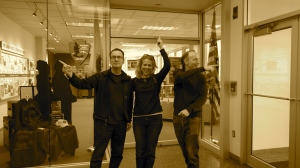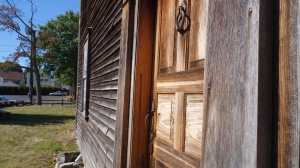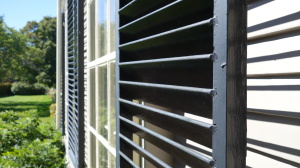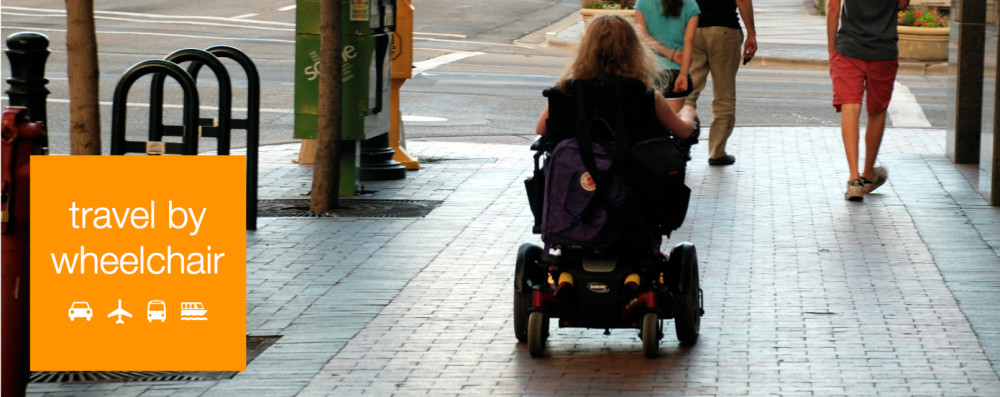John Adams left quite a legacy. Our second president devoted his working life to the ideals of democracy, and his descendants (including their wives and daughters) carried on his work as diplomats, politicians, writers, and historians.
The birthplace of John Adams and John Quincy Adams (6th president) are the first stops on the Adams National Historical Park tour, which leaves by trolley from the national park visitor center on 1250 Hancock Street – but beware, it’s surprisingly hard to find the entrance. The visitor center has one accessible entrance from Hancock Street and although small, has an informative 30-minute documentary (and an accessible bathroom). The trolley is not wheelchair- accessible (despite the fact that it says it is in the National Park Service (NPS) brochure); arrangements can be made in advance with the park rangers to follow in your car. The two birthplace homes were built in the late 1600’s and are not accessible to power wheelchairs. Rangers can make accommodations by ramp for small (really, really small) manual chairs or walkers.
The visitor center has one accessible entrance from Hancock Street and although small, has an informative 30-minute documentary (and an accessible bathroom). The trolley is not wheelchair- accessible (despite the fact that it says it is in the National Park Service (NPS) brochure); arrangements can be made in advance with the park rangers to follow in your car. The two birthplace homes were built in the late 1600’s and are not accessible to power wheelchairs. Rangers can make accommodations by ramp for small (really, really small) manual chairs or walkers.
 “Peace field” is the third house on the tour; John and Abigail Adams purchased this farm, not far from their old homesteads, and retired here to farm their 75 acres. Six acres, a brightly-flowering garden (with original box hedge!) and a genteel home remain; but only the barn is power-chair accessible. It might be worth taking in some programs at the barn just to soak in the ambiance of the estate; even now, with the city of Quincy growing, bustling and motoring on all sides, there is a sense of escape once you enter through the gates.
“Peace field” is the third house on the tour; John and Abigail Adams purchased this farm, not far from their old homesteads, and retired here to farm their 75 acres. Six acres, a brightly-flowering garden (with original box hedge!) and a genteel home remain; but only the barn is power-chair accessible. It might be worth taking in some programs at the barn just to soak in the ambiance of the estate; even now, with the city of Quincy growing, bustling and motoring on all sides, there is a sense of escape once you enter through the gates.
Marianne took a pass on this tour, and I would encourage other power-wheeclhair users to do the same. The homes are doorways to another time, and the Revolutionary War era comes to life within their walls but the late 1600’s were not a wheelchair-friendly time in architecture. I’d suggest watching the HBO documentary “John Adams” (starring Laura Linney) or reading David McCullough’s historical novel, John Adams for a dose of the Adams family in the comfort of your own home.
The NPS does much that it can to accommodate the needs of wheelchair-users. I do not expect the government to retrofit these antique saltbox houses – an amendment which would substantially change the nature of the historic places – to accommodate power chairs. To see the cramped nature of the few rooms, the low and dark doorway lintels, the utter simplicity of furnishings, and the cracks through the uninsulated walls is to begin to imagine what it was like to raise a family, carve out a life, and imagine a revolution.
I do expect the City of Boston to create ADA-conforming ramps and curb cuts to sidewalks, even in historic neighborhoods of Boston. (See Laura McTaggart’s Cognoscenti article here on challenges by historic committees to pedestrian accessibility.) It is the 21st century, and bicycles, skateboards, baby carriages, wheelchairs, walkers and canes all travel these streets now on their normal course of daily life. To take a page from the revolutionaries: don’t tread on our rights!


